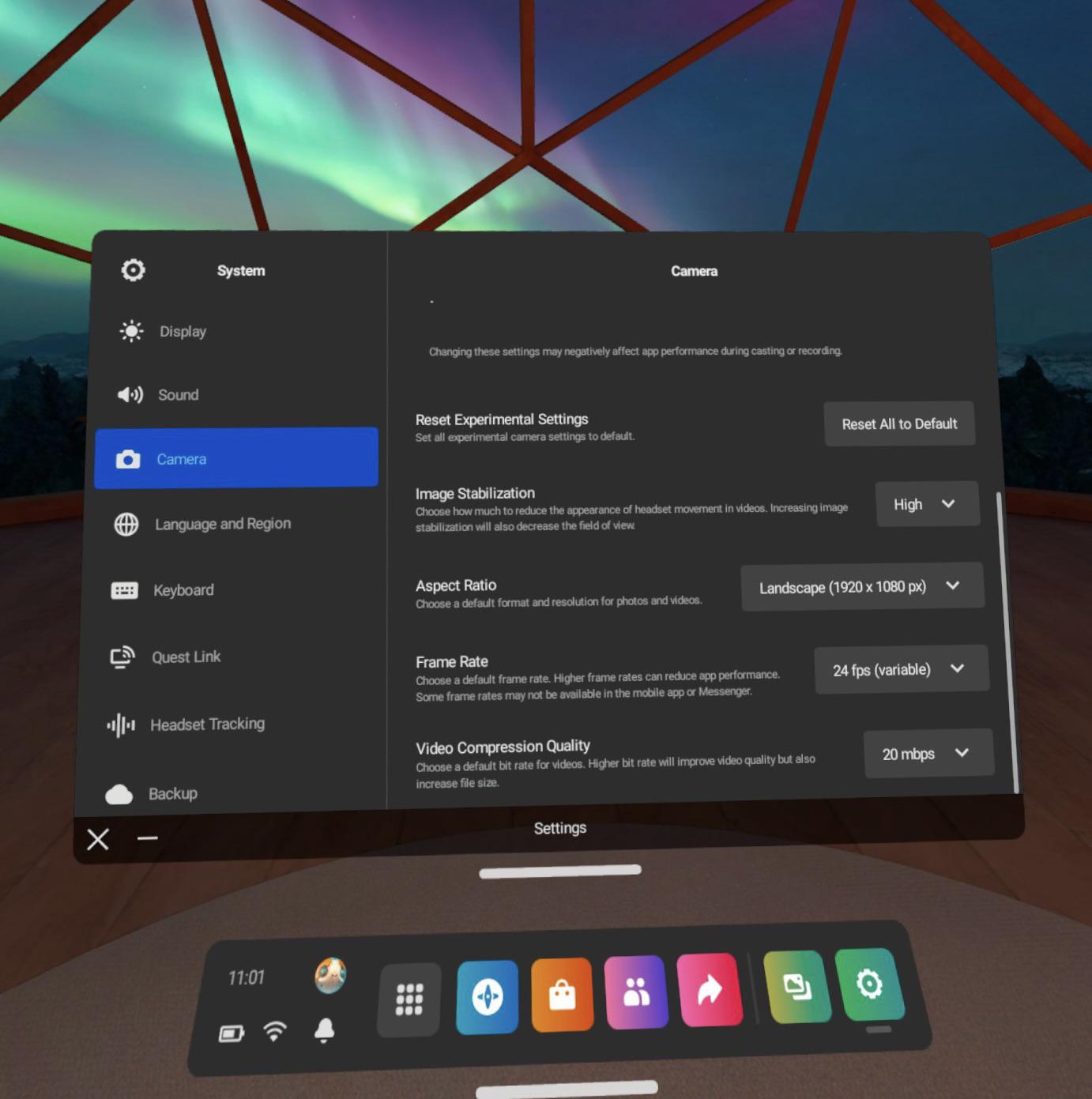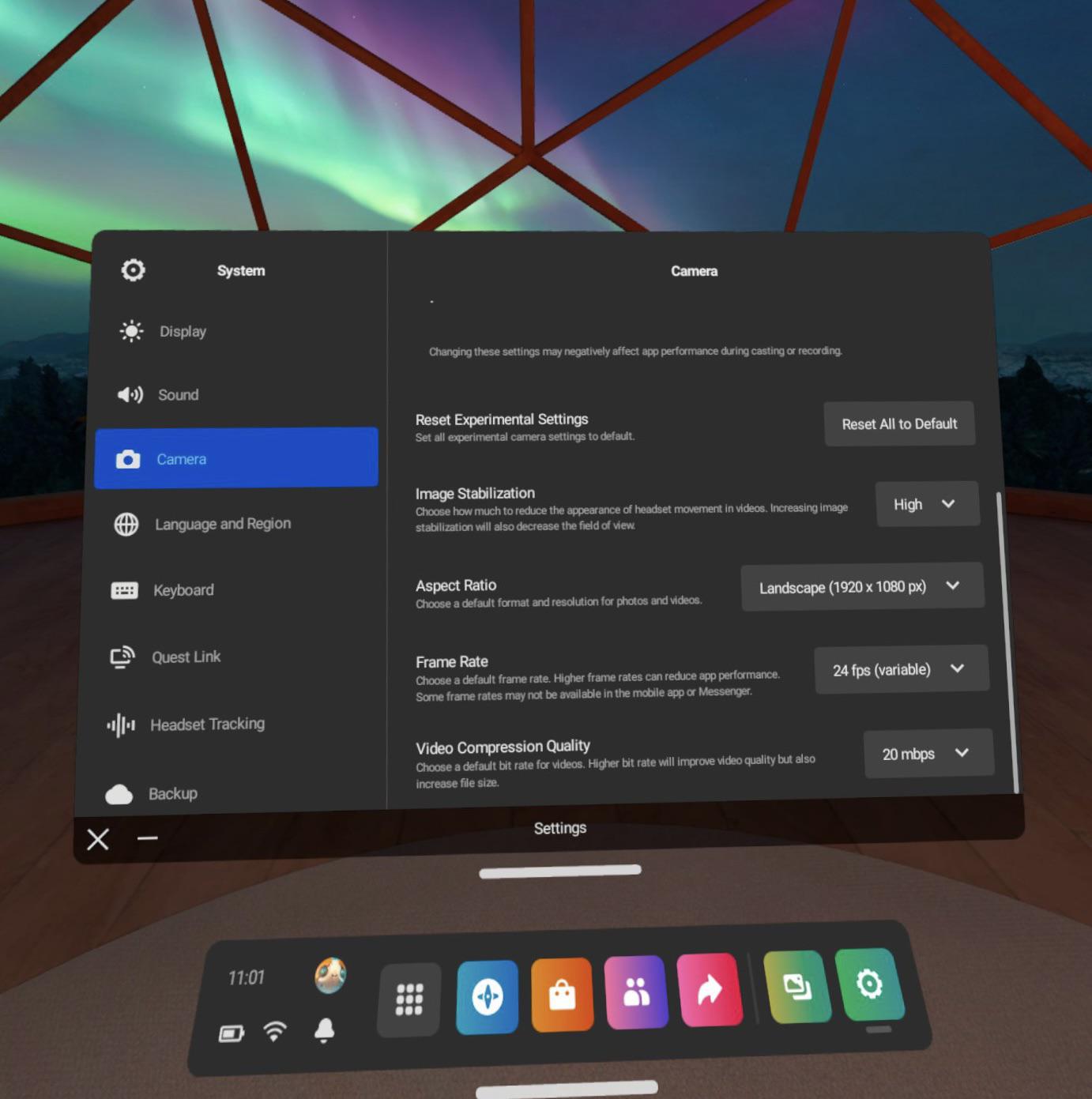The latest public test channel build for v43 of Quest’s system software includes new video recording options, plus the addition of new permissions for eye and facial expression tracking on Quest Pro.
Meta offers a PTC or public test channel for people to opt-in for a chance to try and test new Quest features and updates early before they roll out to all users. The new camera tab in the settings menu, pictured below, includes image stabilization, aspect radio, frame rate and compression quality options, as spotted by u/deliciouspotato2 on Reddit. This should hopefully give Quest players and content creators more options and reliable recordings when filming content in VR, after calls for improvements from content creators earlier this year.

While Meta did add some new video recording options in June, they were aimed at developers and only available through the Oculus Developer Hub. These new options don’t appear to be exactly the same as the ones in the developer hub, though, with a higher frame rate seemingly accessible through the developer tool, for example.
Quest Pro: Eye Tracking And Natural Facial Expressions


The same user also discovered some new permissions for ‘Eye Tracking’ and ‘Natural Facial Expressions’ in the Quest PTC build. Permissions on the Quest system are a security feature that allow users to control how much access an app has to a specific category of information, data or services. Current examples include permission to access local files or use the microphone. A Quest 2 headset of our own running v43 shows these new permissions, but not the new camera features yet. We expect the new permissions appeared in anticipation of Quest Pro (Project Cambria), Meta’s upcoming high-end headset. Current Quest hardware doesn’t support eye or facial expression tracking, but Quest Pro will feature support for both.
We expect Quest Pro to run on a version of the Quest’s modified Android-based OS — Mark Zuckerberg has made it a point to make clear the high-end headset will still run Quest apps — which is likely why those permissions appear in the software even though hardware support isn’t there on current headsets. We noticed Meta’s Horizon Worlds already makes use of the new permission, suggesting that’s one of the first places we’ll see Meta avatars with added “natural” facial expressions driven by Quest Pro.
The most recent public release of the Quest system software, v42, added new Oculus Move features and parental control options — you can read about those here.
Clarification: Article and headline updated after publication to clarify the difference between the recording tools found in v43 and those found in a recent developer tool.


























